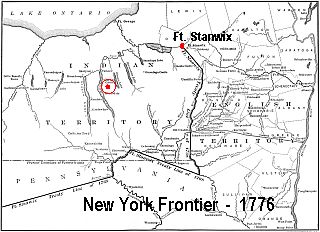info@levannarl.com


(315) 567-1646
info@levannarl.com |
 
|
(315) 567-1646 |
| Flooring | Barn Siding | Mantels | Box Beams | Finishes | Gallery | CONTACT |
| About |
 |
COMPANY HISTORY: An Overview
In the spring of 1998, a casual drive in the country marked a new beginning for Doug Holland. From the reclamation of his first hand hewed timbers found within the ruins on Levanna Road that spring day, to the business for which he so passionately labored to become in May, 2002, Doug knew there was only one name for his vision. Today, you can find Doug's products in distinctive interiors of fine homes, restaurants, camps and retail stores from coast to coast. Products include Custom Wide Plank and Eco-friendly Engineered Flooring; Pre-finishing Options; Paneling; Tiles; Fireplace Mantels; Box Beams and other woodworks. Doug is great to work with. He's down to earth, personable, honest and knowledgeable. He has a passion for what was, and customer satisfaction is as important as the quality he provides. So enjoy your tour, and then give him a call. Explore Levanna for what it is.... and be part of it. |

|
THE LEVANNA ROAD SITE: Amazing History & Discoveries
Scipioville, as it's known today, has had a very long history. The hamlet is located in Cayuga County, which is located in the central part of New York state, in the eastern Finger Lakes region. But before there was a Cayuga County (1799), even before New York was granted statehood (1788), it was bounty land - enacted by Congress on September 16th, 1776 to be set aside for veterans of our nation's first war. The bounty was a vast expanse of forested land extending farther west than accurate maps of the day: west of the Fort Stanwix Treaty Line (1768). It was the land of The Great Iroquois League - and many who ventured in would not return. They would be a most terrifying foe if aligned with England. Well, the Iroquois were a terrifying foe, and it was a long and hidious war...but we all know how it turned out. The war cost the Iroquois dearly. The vastness of their homeland became a trophy for the victors and within a few years it was transformed. Millions of acres were allocated for waterways and distributed to Patriot soldiers as payment, given and sold to settlers and land speculators. A portion of that land, 1.8 million acres, became the Military Tract of Central New York. The Tract was divideded into twenty-eight townships: each township contained 60,000 acres which were sub-divided into 600-acre lots. By July 3rd, 1790, twenty-six of the twenty-eight towns had been surveyed, maped and numbered. The map (seen left) is from the original, but the original was not colored. Lot numbers were drawn by lottery, and in 1790, Henry Watkins drew Lot No. 27 (red) in Township No. 12 [Scipio]. He was the first settler to arrive in that town. Henry left Granville, Washington County in late summer with a knapsack on his back. After 10 days and about 250 miles over rude terrain, Henry arrived at Cayuga Lake, and then proceeded to lot 27. The lot bordered the east line of the Cayuga Reservation near what is now Scipioville, arriving there on September 10th. He erected a log house, the first built in this section, and then returned east, stopping in Albany to register his lot in the land office. Henry returned to Scipio with his family the latter part of March, 1791. Scipioville was first known as Watkins Settlement and Watkins Corners after Henry Watkins. It was not long after that others started arriving; and started building. Gideon Allen was a cousin to Revolutionary War hero Ethan Allen, and, like Henry Watkins, also came from Washington County. He settled about 800 feet west of the intersection where his grandson, Lemuel Allen, later lived (See 1859 map - L. Allen). In time, Gideon bought a farm in Springport where he resided until his death at the age of 97. Justus Allen, Gideon's son, was a prominent man in the town. In 1806, Justus bought the tannery (located across from his father's house) that was built in 1797 by Israel Busby, and carried on the tanning and currying business for a number of years. He was also town supervisor for two years. Justus Allen died April 8th, 1845 at the age of 69, and was succeeded in the tanning business by his son Lemuel, in the same old building Busby built. Busby was no doubt the first tanner in this section of country; and died March 4th, 1811 at age 51. In 1806, Paine Fitch built a tavern at the crossroad's southeast corner and it was afterwards known as Fitch's Corners. It was later named Mechanicsburg, until the establishment of the post office in 1836, when it adopted its present name. The first building east of the ruins (see 2019) was a wagon shop (W. S.) with a blacksmith shop (B. S.) located across the road. Amaziah Griswold from New Lebanon, Columbia County, NY, was one of the earliest settlers and the first shoe maker in Scipioville. In his house (See 1859 - lower right: D. Nichols), the Western Luminary was published, being the second newspaper published in Cayuga County. It was published every Tuesday evening, "by Ebenezer Eaton for Eaton & Co.." The earliest known preserved copy is dated "Watkins Settlement, Tuesday, July 21st, 1801," No. 17 of Vol. 1. A tin shop was established about 1809, and a general store was opened in 1813. THE RUINS. The dwelling appears on the earliest map of Scipioville dated 1853, and on subsequent maps dated 1859 and 1875. The 1859 map identified the occupant as George R. Kent, a Saddler and harness maker with a saddle shop located three buildings south of the intersection. Sadly, earlier references to the ruins dwelling were never found: not because it didn't exist earlier in Scipioville's history, but because it was lost to history. A two-day search of maps, Deeds, Assessment Records, Census Data and Genealogy Resources was provided by the Cayuga County Historian's Office, Auburn, NY. Unfortunately, their vast resources, time, effort and expertise brought me no closer to finding the structure's age or its first owner. The earliest Deed records regarding the property was an 1849 transfer from a John Allen to Wm.Wooden, and then transfered twice more before it was purchased by George Kent in 1878. My primary reference for this story was a book written in 1879 entitled, "History Of Cayuga County New York" by Elliot G. Storke, with much, undoubtedly, written from hearsay and faded memories of the interviewees, but there was no mention of that property. My thought, though, is that the ruins is very old and that it was the home of Justus Allen who probably built next door to his father, years before 1806. Back then, one was not allowed to own property before age 21. Justice Allen turned 21 in 1797; the same year it is said that Israel Busby built his tannery. Gideon Allen's house is about 250 feet west of the ruins. A new tannery in close proximity would have provided an opportunity for the enterpising Justus to become Busby's apprentice, learn the trade, and then purchase the business at the age of 30, when the timing worked for both parties. But, without documented evidence to prove it's age or ownership, one can only speculate. The earliest Assessment Records were dated 1851 and other records often showed gaps, had poorly entered data or was confusing to decipher due to unexplainable differences in the entries. Deed records show that Justus Allen purchased the Busby business property in 1808, making him 32 when he bought the tannery. Beyond that is anyone's guess. THE FIND. I get excited when I find something wonderous, and to me, the ruins fit that catagory. It was a small, south-facing single story house built less than 40 feet from the edge of the road. The north and east foundation walls (i.e, cellar walls) were built into a rise (knoll); so when you stepped out the back door of the house, you were on grade. The formal entrance was on the east side, up a low slope. The south and west foundation walls were fully exposed to view from the road and measured 73" high and 21" thick. The wall's exterior consisted of colorful split-faced granite fieldstone with brushed overgrout mortar joints. The core was made of mortared rubble and shards, while the wall's interior surface was common motared fieldstone. It was historical, old-school masonry. The cellar's south wall had a 24" window opening located 44" from the inside corner of the west wall. 13 feet from the same corner was a 42" door opening with a 2" x 14" white pine door frame still intact in the stone work. The top of the head jamb equaled the height of the wall. The cellar's interior measured 17 feet deep by 33 feet along the front. As for the house above, only the eastern half of the front wall, the east wall and the eastern half of the north wall remained, along with that section of the roof. The wrought iron hardware (seen left) were the gems discovered in the cellar. They are shown in relative size to each other and are prime examples of late 18th/early 19th-century blacksmithing. They were nailed into a heavy, hand-hewn tie beam that worked double duty as a floor joist that rested on top of the foundation wall.
On that Saturday in the spring of 1998, I drove by the site, but then stopped and backed up for a better look. What made me approach that godforesaken mess in the first place was the sight of hand hewed timber posts and beams standing amongst the wreckage: mortise and tenon joinery; a method of construction that is centuries old. This end cut of elm, for example, was taken from the Levanna Road site. That hand hewed beam measured 8" by 8" x however long, and from pith to the hewed edge measured a mere 4 inches. Yet the growth ring count exceeded 300 years. That's more than 300 years of growth IN EIGHT INCHES. Add another 200 + years ago when the tree was felled and we're talkin' more than 500 years of history. It's mind boggling. But that, my friends, is what drew me into this busness. |
| Visits By Appointment Only |
 Auburn, NY 13021 |
 (315) 567-1646 |
 info@levannarl.com |
|
Page Last Updated: 08/06/2023
|